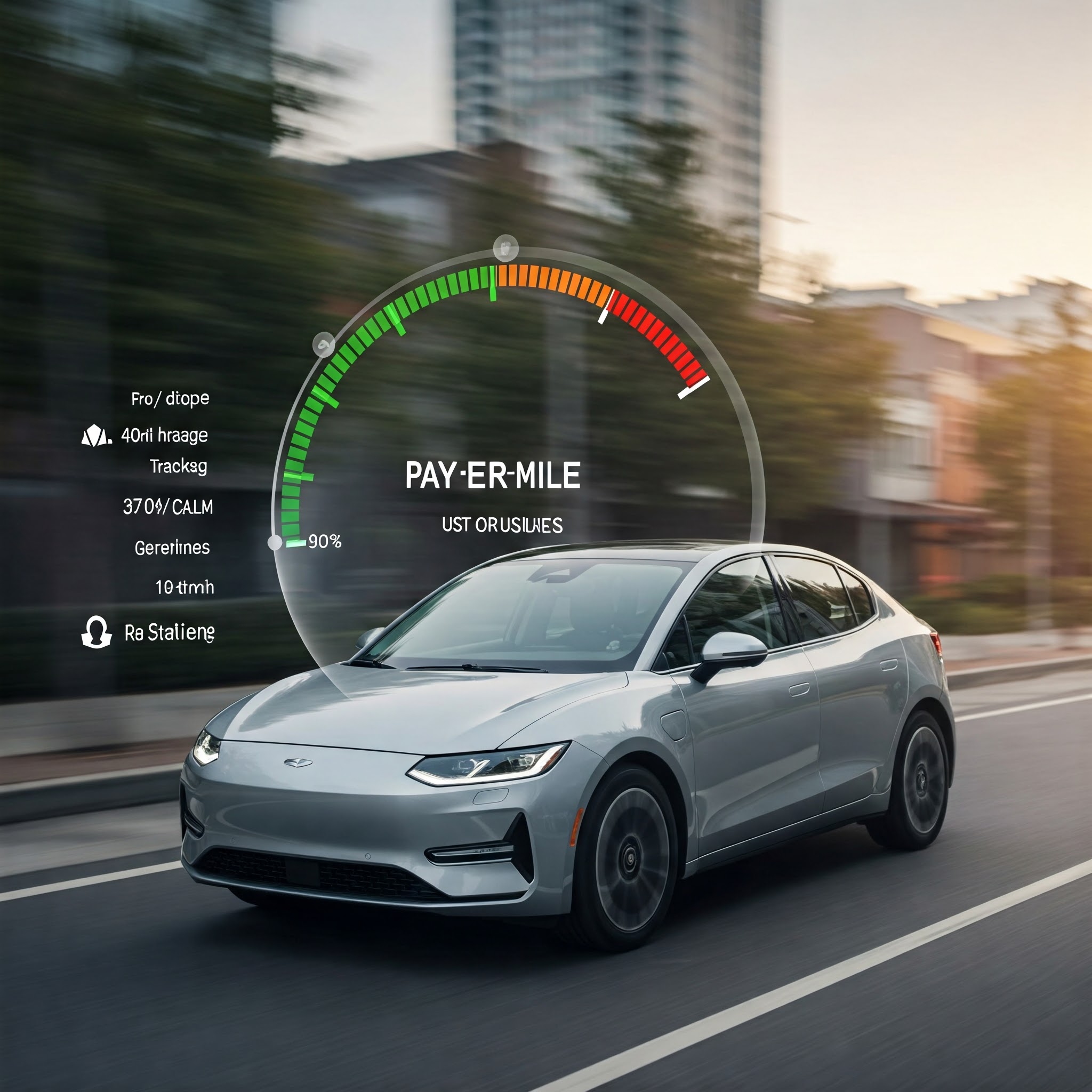Introduction
Did you know that the average American drives about 13,500 miles per year? However, many people drive far less than that. If you’re one of them, traditional car insurance might not be the best fit for you. This is where pay-per-mile car insurance comes in.
Pay-per-mile insurance is an alternative to traditional policies. Instead of a fixed monthly premium, your insurance costs are based on the number of miles you drive. This can be a great option for people who don’t use their car often, but it also has some downsides.
In this article, we’ll explore what pay-per-mile car insurance is, how it works, and its pros and cons. By the end, you’ll know if it’s the right choice for you.
Understanding Pay-Per-Mile Car Insurance
What Is Pay-Per-Mile Insurance?
Pay-per-mile insurance is a type of auto insurance where you pay a base rate plus a per-mile rate. The less you drive, the less you pay.
Here’s how it works:
- You pay a monthly base rate, similar to a standard car insurance policy.
- You also pay a per-mile fee for each mile you drive.
- The insurer tracks your mileage using a device installed in your car or through a mobile app.
- Your monthly bill varies depending on how much you drive.
Who Can Benefit From It?
This type of insurance is ideal for:
- People who work from home and drive occasionally.
- Seniors or retirees who drive only for errands.
- College students who don’t use their car every day.
- City dwellers who rely mostly on public transport.
Key Benefits of Pay-Per-Mile Car Insurance
1. Lower Costs for Low-Mileage Drivers
If you drive less than 10,000 miles per year, you could save hundreds of dollars annually compared to traditional insurance.
2. Encourages Less Driving
Since you pay for every mile, you may be more mindful of how often you drive. This can lead to less fuel consumption and lower car maintenance costs.
3. Environmentally Friendly
Less driving means lower carbon emissions. Pay-per-mile insurance can be a step toward a greener lifestyle.
4. Fair Pricing
Instead of paying the same as someone who drives 20,000 miles a year, your premium is based on your actual mileage.
5. Easy Tracking
Most insurers provide an app or device that lets you monitor your mileage and insurance costs in real-time.
Disadvantages of Pay-Per-Mile Insurance
1. Not Cost-Effective for High-Mileage Drivers
If you drive more than 12,000-15,000 miles per year, this type of insurance might end up costing you more.
2. Mileage Tracking Concerns
To track your miles, the insurer may require you to install a tracking device or use an app. Some people may feel uncomfortable with this level of monitoring.
3. Limited Availability
Not all insurance companies offer pay-per-mile insurance, and availability may be restricted to certain states or cities.
4. Fluctuating Monthly Bills
Unlike traditional insurance, where you pay a fixed amount, your bill varies depending on how much you drive each month. This can make budgeting harder.
5. Possible Higher Base Rate
Even though you pay less per mile, some insurers may charge a higher base rate, making it less beneficial for very low-mileage drivers.
How to Choose the Right Pay-Per-Mile Insurance
If you’re considering switching to a pay-per-mile plan, follow these steps:
- Estimate Your Mileage – Check your car’s odometer to see how many miles you drive per month.
- Compare Costs – Use online calculators or request quotes from different insurers.
- Check the Base Rate – Ensure the base rate is reasonable for your expected mileage.
- Read Reviews – See what other drivers say about the insurer’s service, billing, and claims process.
- Understand Policy Terms – Check if there are any mileage limits, hidden fees, or restrictions.
Common Problems & Solutions
Problem 1: Unreliable Mileage Tracking
Solution: Ensure the tracking device or app is functioning properly. Report any issues to your insurer.
Problem 2: Unexpectedly High Monthly Bills
Solution: If your mileage increases, consider switching to a standard insurance plan.
Problem 3: Limited Coverage Options
Solution: Some pay-per-mile policies may not offer full coverage. Check if add-ons are available.
Problem 4: Privacy Concerns
Solution: Ask insurers about their data policies. Some may offer mileage tracking without GPS monitoring.
Future of Pay-Per-Mile Insurance
This type of insurance is growing in popularity. In the future, we may see:
- More insurance companies offering pay-per-mile plans.
- AI-powered tracking systems for more accurate mileage monitoring.
- Integration with smart cars to calculate real-time insurance costs.
- Eco-friendly discounts for drivers who use electric vehicles or carpool.
Conclusion & Final Thoughts
Pay-per-mile insurance is a great option for drivers who don’t use their car often. It offers lower costs, fair pricing, and environmental benefits. However, it may not be ideal for high-mileage drivers or those uncomfortable with mileage tracking.
Before switching, compare costs, understand the policy terms, and evaluate your driving habits. If you drive less than 10,000 miles per year, this could be the perfect way to save money on car insurance.
Have you tried pay-per-mile insurance? Share your experience in the comments below!
FAQs
1. What is pay-per-mile car insurance? It’s a type of insurance where you pay based on how many miles you drive, rather than a fixed premium.
2. Who should consider pay-per-mile insurance? It’s ideal for people who drive less than 10,000 miles a year, such as remote workers, retirees, and students.
3. How do insurers track my mileage? Most use a tracking device installed in your car or a mobile app to monitor miles driven.
4. Can I switch back to traditional insurance? Yes, most insurers allow you to switch plans if you find that pay-per-mile insurance isn’t right for you.
5. Where can I learn more about pay-per-mile insurance? Visit insurer websites like Metro mile, Nationwide, and Allstate or consult an insurance agent.
